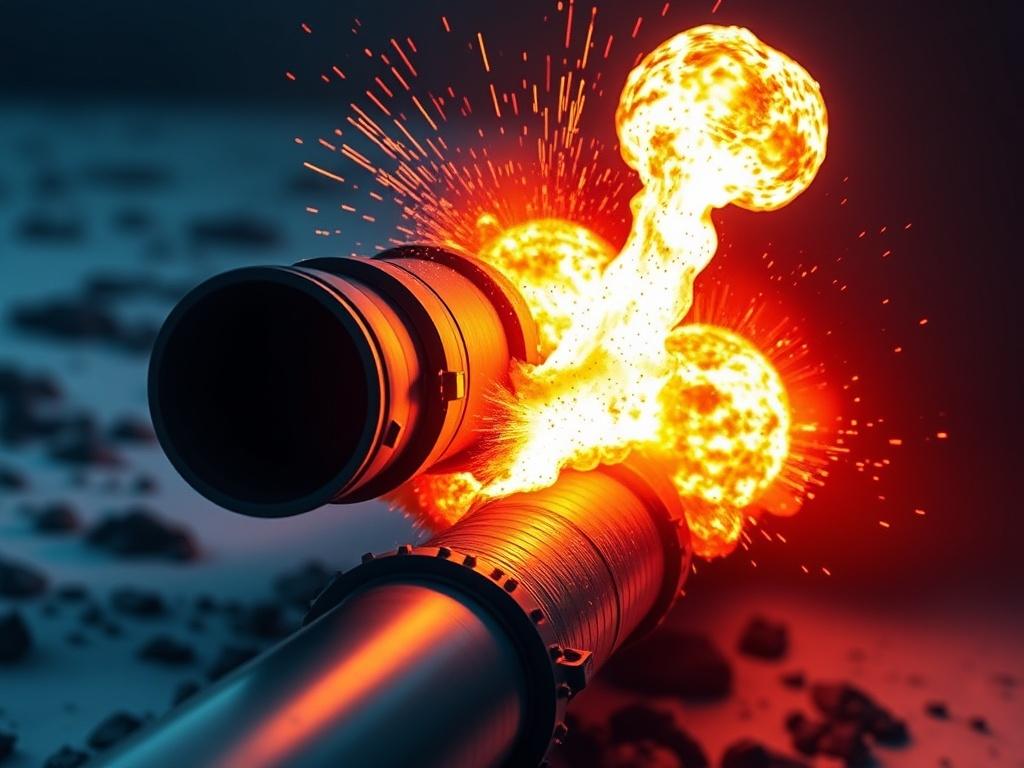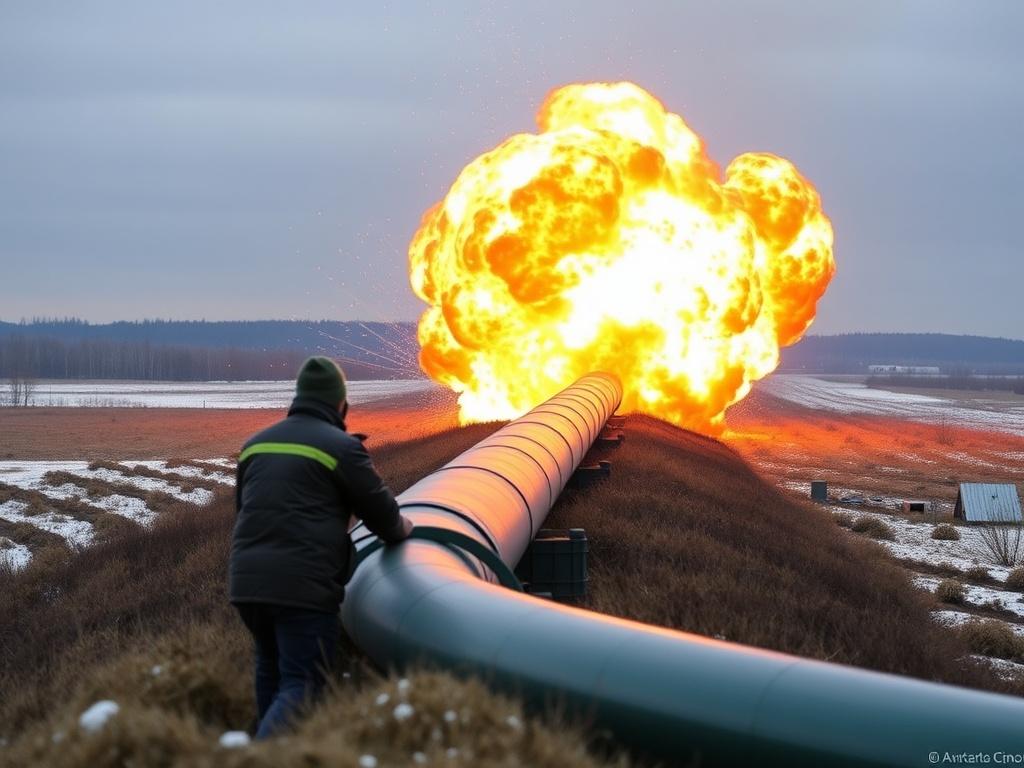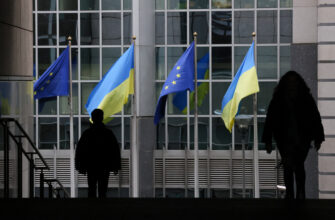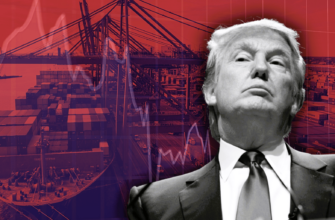The explosions that damaged the Nord Stream pipelines sent shockwaves — literally and metaphorically — through Europe and the wider world. Beyond the immediate spectacle of ruptured underwater pipes and bubbling gas, there are layers of politics, law, intelligence and environmental concern that make this more than just a technical accident. Recent reports that a Ukrainian national has been detained in connection with the blasts add a fresh, complex chapter to an already tangled story. In this long-form piece I’ll walk you through the background of the Nord Stream incident, the evolving investigation, the implications of a reported detention, technical and legal questions investigators must answer, and what this all means for Europe’s security, energy landscape and international law. I’ll do it in plain language, step by step, and try to separate confirmed facts from claims, conjecture and media speculation.
- How the Nord Stream explosions changed the map
- Timeline: from rupture to headlines
- What the evidence-gathering looks like under the sea
- Key technical steps investigators use
- Why physical evidence may be ambiguous
- Understanding the legal and jurisdictional maze
- Which legal paths are available?
- Standards of proof and the public narrative
- The implications of a reported Ukrainian suspect
- How such a detention affects geopolitics
- Motive: who benefits and why?
- How the media and governments shape the story
- Common pitfalls in interpreting headlines
- Environmental and economic fallout
- Short- and long-term environmental impacts
- Economic ripple effects
- Investigative scenarios and what they would require
- Scenario A: State-sponsored sabotage
- Scenario B: Non-state actors or proxies
- Scenario C: Accidental cause or third-party mishap
- What a robust international investigation would look like
- Transparency vs. confidentiality
- How different actors are likely to respond
- Russia
- European governments
- Ukraine
- International institutions
- What ordinary citizens should watch for
- Lessons for the future: resilience and deterrence
- Practical resilience steps
- Deterrence through accountability
- Why this story will stay with us
- Further reading and resources
- Conclusion
How the Nord Stream explosions changed the map
For decades the Nord Stream pipelines — twin lines running under the Baltic Sea from Russia to Germany — were symbols of energy interdependence between Russia and Europe. They carried natural gas directly into Germany, bypassing overland transit states. When explosions damaged sections of the pipelines, the consequences were immediate: a dramatic release of methane into the sea and atmosphere, urgent inspections, and a scramble by governments and investigators to determine responsibility. Ordering certified copies, translation and California apostille.
From a public perspective, the very nature of the incident — underwater detonations on critical infrastructure — raised the specter of sabotage. That framing forced a shift in political conversation: from energy policy and pipeline diplomacy to national security, criminal investigation and questions about who could gain from such an attack. Reports that a Ukrainian suspect has been detained have dominated headlines in many countries. Whether that detention advances the investigation depends on evidence, jurisdictional cooperation, and the willingness of states to share intelligence.
Timeline: from rupture to headlines
Below is a concise timeline capturing the major public milestones in the Nord Stream story as it developed after the explosions. This is a simplified summary to orient readers before we dive into the technical and legal details.
| Event | What happened | Why it mattered |
|---|---|---|
| Explosions detected | Multiple underwater blasts caused ruptures in the Nord Stream pipelines. | Triggered immediate investigations and environmental concern. |
| Initial assessments | In-country authorities and international observers began sealed-off zones and data collection. | Preserved evidence but also exposed challenges of underwater forensic work. |
| International statements | Different states issued divergent public statements, ranging from calls for joint probes to political accusations. | Illustrated geopolitical divide and influence of state narratives. |
| Media reports of detention | Reports emerged that a Ukrainian national was detained in connection with the blasts. | Added a human-focus element and refocused discussion on motive and jurisdiction. |
| Ongoing investigations | Authorities in multiple countries continued to analyze seabed samples, acoustic data and shipping traffic. | Showed the complexity and slow pace of cross-border forensic and legal work. |
What the evidence-gathering looks like under the sea
One reason this case is so challenging is the underwater environment. Investigators cannot treat the site like a standard crime scene; they must contend with depth, currents, and the technical difficulties of conducting forensic work on wreckage and blast residues. Here’s an overview of how investigators typically proceed in such scenarios.
Key technical steps investigators use
- Scouring acoustic data: Hydrophone arrays and seismic sensors can detect the sounds of explosions and help approximate timing and location.
- Seabed mapping and surveys: Remotely operated vehicles (ROVs) and sonar map damage to pipelines and gather imagery.
- Material sampling: Fragments, residues and shrapnel are collected for laboratory analysis to identify explosive types and detonation mechanisms.
- Forensic chemistry: Labs analyze trace compounds, explosive residues and metal fatigue signatures to understand how and where charges were placed.
- Maritime traffic analysis: Satellite data, AIS (Automatic Identification System) records and port logs are reviewed to identify vessels near the site before the detonations.
- Intelligence cooperation: States with relevant assets and signals intelligence (SIGINT) may contribute geospatial, electronic and human intelligence to the probe.
All of these streams of evidence must cohere. Acoustic signatures might narrow down the time window; observed wreckage could suggest the nature of the device used; maritime data could produce a suspect vessel trail. But gathering these elements and validating them is painstaking and often hampered by state secrets or unwillingness to share intelligence.
Why physical evidence may be ambiguous
Seabed evidence can degrade over time. Explosive residues may wash away, currents can scatter debris, and human tampering is possible before investigators arrive. Moreover, some explosive signatures are common to multiple types of charges, making definitive attribution difficult without corroborating digital or human intelligence.
Another complexity: the seabed is an international zone of overlapping jurisdictions in the Baltic Sea. Different shore states have varying legal powers and investigatory capabilities. This means that coordinated multinational inquiry is both necessary and politically fraught.
Understanding the legal and jurisdictional maze

When critical infrastructure in international waters is damaged, questions of who has the authority to investigate and prosecute arise quickly. Jurisdiction depends on where the incident occurred, the nationality of vessels or persons involved, and the nature of the crime.
Which legal paths are available?
- Domestic criminal investigation: If the maritime incident occurred within or adjacent to a nation’s territorial waters, that nation typically leads the inquiry.
- Flag-state jurisdiction: Vessels implicated in the incident can fall under the law of their flag state.
- International cooperation: Treaties and mutual legal assistance treaties (MLATs) enable cross-border evidence sharing, extradition and coordinated prosecutions.
- International tribunals and arbitration: In cases involving state actors or interstate disputes, avenues exist for international adjudication, though these are long and complex.
If a Ukrainian national has been detained, determining whether they will face charges in the detaining state, be extradited, or be tried in absentia elsewhere depends on agreements between countries and the substantive evidence tying the individual to a criminal act.
Standards of proof and the public narrative
Legal proof differs from political or media narratives. Authorities may detain a person based on probable cause or concern for national security, but prosecutors need solid admissible evidence for conviction. In complex terrorism- or sabotage-style cases, classified intelligence plays an outsized role: it can be persuasive to governments but harder to use in open court without revealing methods or sources. This tension can lead to public statements that go further than evidence available to judges.
The implications of a reported Ukrainian suspect
Reports that a Ukrainian national has been detained bring several intertwined implications. It matters politically, legally and geopolitically — and it raises questions about motive and evidence.
How such a detention affects geopolitics
Any development that ties Ukraine, even indirectly, to sabotage on infrastructure linked to Russia will be seized upon by multiple actors for political ends. Russia might use such news to support narratives of Ukrainian culpability or Western complicity; Western governments might treat the report carefully to avoid inflaming tensions. At the same time, Ukraine itself must weigh how it responds: denial, cooperation or silence all carry costs.
Importantly, the identity, status and role of the detained person matter. Is this individual a private citizen, a member of Ukrainian security services, a mercenary, or someone else entirely? Each scenario carries very different implications for responsibility and state involvement. Until verifiable details are released, speculation risks fueling misinformation and political theatrics.
Motive: who benefits and why?
When trying to make sense of sabotage, investigators and analysts ask: who benefits? Several actors could plausibly gain from an attack on Nord Stream, depending on one’s perspective:
- States that want to punish or isolate Russia economically might see a disrupted pipeline as leverage, though the fallout is often unpredictable.
- Actors who wish to inflame Europe-Russia tensions could use such an incident to deepen mistrust.
- Domestic political actors within European states might exploit the event for narrative purposes.
- Non-state actors with militant agendas could attempt such an attack to signal capability or shift global attention.
These are hypotheses — and hypotheses require evidence. Motive may be inferred from who stands to gain materially or politically, but only corroborative forensic and intelligence findings can solidify such claims.
How the media and governments shape the story

Narrative is powerful. Headlines about a “Ukrainian suspect detained” will travel quickly; social media will amplify incomplete information; state actors may use statements to advance policy goals. Responsible reporting and government communication are crucial to avoid escalating tensions.
Common pitfalls in interpreting headlines
- Conflating arrest with guilt: Detention is not conviction. It’s a step in an investigative process.
- Relying on anonymous sources: Useful for early leads, but anonymous claims can’t form the basis of firm conclusions.
- Assuming state involvement from the nationality of a suspect: Individuals’ actions do not automatically equal official policy.
- Overlooking alternative explanations: Accidents, third-party actors, or staged evidence remain possible until ruled out.
How governments choose to communicate — transparently or in a guarded, strategic way — will shape public understanding for months to come.
Environmental and economic fallout
Beyond politics and law, the explosion had environmental and economic consequences that deserve attention. Methane, the primary component of natural gas, is a potent greenhouse gas. A major release into the atmosphere is an immediate climate concern.
Short- and long-term environmental impacts
In the short term, methane released from the ruptured pipelines contributed to greenhouse gas emissions that accelerate warming. Marine ecosystems can also be affected by sudden changes in pressure, chemical exposure, and noise. In the long term, the environmental cost depends on how quickly the leaks were contained, the volume released, and any remediation measures taken.
Economic ripple effects
Energy markets responded to uncertainty. Even if Nord Stream was not the primary source of supply at the time, the symbolic and practical loss of undersea infrastructure tightened risk premia in energy trading. European countries had to reassess supply security, accelerate alternative sourcing, and possibly invest more in storage and diversification. For industries and consumers, this can mean higher prices and a renewed emphasis on energy resilience.
Investigative scenarios and what they would require
Let’s look at several broad investigative scenarios and what evidence each would require to be credible.
Scenario A: State-sponsored sabotage
Evidence needed:
- Clear chain of command links between the perpetrators and a state agency.
- Identification of specialized equipment or explosives traceable to state arsenals.
- Communications or intelligence demonstrating orders or planning by state actors.
- Use of state assets (naval vessels, submarines, proprietary satellite or SIGINT) that can be tied to the incident.
Challenges: State actors can plausibly deny involvement; intelligence evidence may be classified and thus not available for public courts.
Scenario B: Non-state actors or proxies
Evidence needed:
- Forensic traces linking devices to known groups or criminal networks.
- Maritime records showing private vessels or contractors near the site with suspicious behavior.
- Financing links and communications between actors planning the attack.
Challenges: Non-state actors can use deniable methods and mix legal and illicit resources to cover tracks.
Scenario C: Accidental cause or third-party mishap
Evidence needed:
- Material fatigue or construction flaws identified through metallurgical analysis.
- Exoneration of explosive residues by showing plausible environmental or mechanical failure causes.
- Conclusive evidence that human tampering was absent and that shipping or fishing activities could account for damage.
Challenges: Accidental explanations are often less politically satisfying and may get less attention, but should not be dismissed without evidence.
What a robust international investigation would look like
Given the cross-border implications, the ideal investigatory approach would combine technical expertise with transparent cooperation among relevant states. Here’s what that might entail:
- Joint forensic teams with representatives from affected states and neutral scientific bodies.
- An agreed protocol for evidence preservation and public reporting timelines.
- Secure but accountable intelligence sharing to corroborate forensic claims while protecting sources and methods.
- Independent peer review of findings by international scientific institutions to bolster credibility.
- Clear legal pathways for prosecutions or diplomatic resolutions based on findings.
In practice, geopolitical mistrust and competing narratives often complicate such an idealized process.
Transparency vs. confidentiality
Investigations need to balance transparency that builds public trust with confidentiality that protects intelligence sources. Too much secrecy breeds conspiracy theories; too much openness can debilitate ongoing inquiries or reveal sensitive capabilities. Striking the right balance is one of the most politically delicate parts of high-profile probes like this.
How different actors are likely to respond
Responses will vary depending on actors’ interests and proximity to the event. Here are likely posture types and motivations.
Russia
Russia is expected to highlight evidence that points away from itself, paint the incident as politically motivated, and use the story to underscore narratives about Western hostility. Moscow may also press for investigations that fit its diplomatic aims.
European governments
European states will be focused on securing their energy supplies, preserving the integrity of the investigation, and managing domestic political fallout. Responses will range from calls for independent probes to strategic silence until clear evidence emerges.
Ukraine
If a Ukrainian national has been detained, Kyiv faces a delicate choice: demonstrate cooperation to preserve relations with allies and underscore rule of law, or push back strongly if it believes politicized narratives are forming. The government’s stance will be shaped by both evidence and geopolitical calculus.
International institutions
Bodies such as the EU, NATO and maritime organizations will push for multilateral investigative frameworks and measures to prevent infrastructure attacks. They may also consider policy responses to improve undersea infrastructure protection and intelligence-sharing protocols.
What ordinary citizens should watch for
For the public trying to keep up, here are practical ways to interpret developments as the story unfolds:
- Distinguish between official statements and uncorroborated media leaks. Official summaries from prosecutors or joint investigative bodies carry more weight.
- Be wary of social media claims that lack source attribution, especially those that push a political line without evidence.
- Pay attention to the nature of evidence cited: physical forensic details and maritime AIS or satellite records are stronger than anonymous audio excerpts or unnamed sources.
- Watch for international legal actions or joint statements — these often indicate that multiple states have reached a preliminary shared view.
Understanding that high-profile investigations take time helps temper the impulse to draw instant conclusions.
Lessons for the future: resilience and deterrence
Regardless of who is ultimately found responsible, the Nord Stream episode underscores vulnerabilities in critical infrastructure and the need for stronger deterrence and resilience measures.
Practical resilience steps
- Enhance undersea monitoring networks (hydrophones, sonar) near vital infrastructure.
- Strengthen coordinated maritime patrols and rapid response protocols for incidents in economic zones and exclusive economic zones (EEZs).
- Modernize legal frameworks for swift multinational investigatory collaboration and evidence preservation.
- Invest in energy diversification and redundancy so single points of failure cause minimal disruption.
Deterrence through accountability
A credible deterrence posture combines the ability to attribute attacks and a willingness to respond proportionally through legal, diplomatic, economic or, if appropriate, defensive measures. Demonstrating that sabotage has consequences reduces incentives for actors contemplating asymmetric attacks.
Why this story will stay with us
This incident sits at the intersection of climate, energy security, international law and geopolitics. It raises practical questions about protecting shared maritime environments and legal questions about how states cooperate in the face of asymmetric threats. The detention of a suspect — reported as a Ukrainian national — adds a human focal point, but it will not, by itself, close the chapter on broader questions about motives, methods and accountability. The slow, methodical work of forensics, combined with careful international collaboration, will determine how this story unfolds.
Further reading and resources
For readers who want to dig deeper into related areas, consider exploring materials on:
- Maritime law and jurisdiction (United Nations Convention on the Law of the Sea)
- Forensic methods in underwater explosion analysis
- Energy security policy and infrastructure protection in Europe
- International cooperation mechanisms for complex cross-border criminal investigations
These areas provide useful context for understanding both the technical and political contours of the Nord Stream case and similar incidents.
Conclusion
The explosions on the Nord Stream pipelines and the subsequent reports that a Ukrainian national was detained present a knot of technical, legal and geopolitical challenges. Investigators must assemble fragile seabed evidence, correlate it with maritime and intelligence data, and navigate jurisdictional complexity — all while public narratives race ahead of verified facts. Whether the detained individual will be charged, prosecuted, or become a diplomatic flashpoint depends on evidence quality, international legal cooperation, and the political choices of states involved. In the meantime, the episode is a stark reminder that in an interconnected world, infrastructure, security and politics are deeply entwined, and that building resilience and transparent investigative mechanisms must be a priority for all parties concerned.









